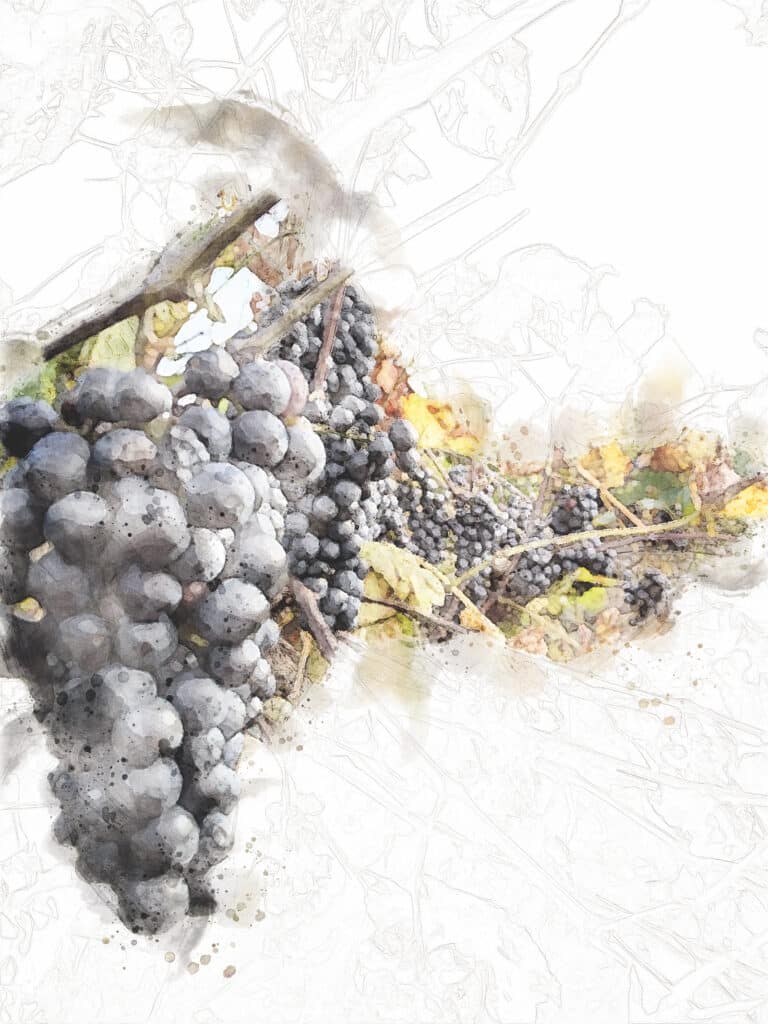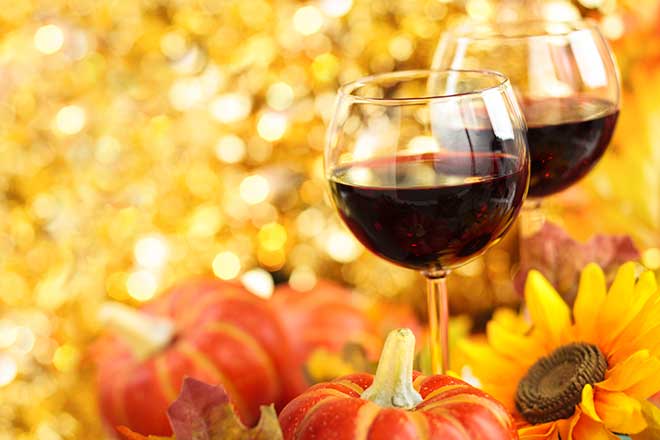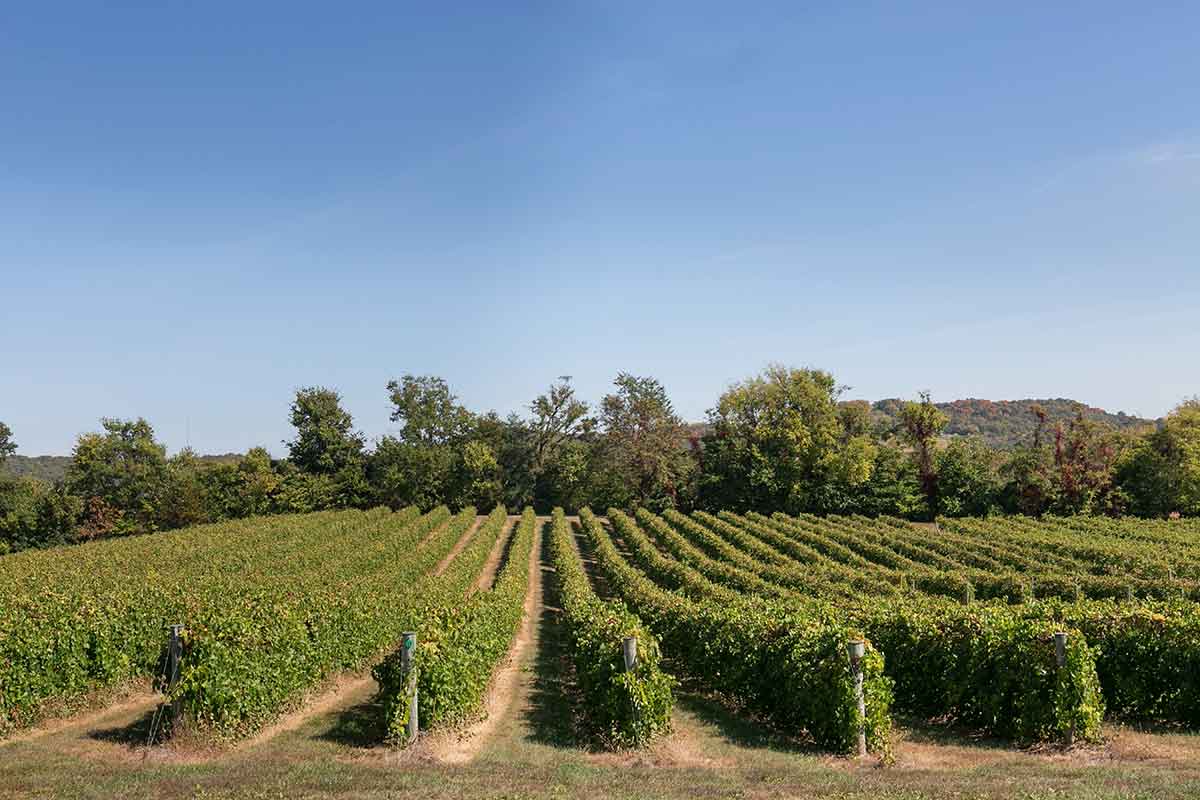MISSOURI HAS LONG RELIED UPON GRAPES that are less familiar, at least to those who peruse the wine lists of America’s restaurants. To a degree, it’s a game of numbers; based on how many wineries produce a particular wine. Learn the whole explanation.

By Doug Frost, who is both a Master of Wine and Master Sommelier, one of only three in the world to achieve both titles. He lives in Kansas City.
Thousands of people in the United States make Cabernet Sauvignon and Chardonnay. Add in the rest of the world and Cabernet and Chardonnay interpreters number in the tens of thousands, and perhaps more.
How many people grow and bottle Vignoles or Norton? Fewer than a hundred, surely. In Europe, hybrid grapes such as those are forbidden to be called wine in any codified and regulated wine region. The rest of the world is still waking up to those sorts of grapes. Missouri leads the way, at least as much as any other place on the globe.
This dearth of actors helps explain why so few have heard of grapes like these and others: Seyval Blanc, Vidal Blanc, Valvin Muscat, Traminette, Chambourcin, and the rest that Missouri winemakers have adroitly turned into tasty wines over the last few decades. It also explains a certain amount of defensiveness when consumers evince surprise that the grapes they’ve most often heard about (Cabernet, Chardonnay, Merlot, Pinot Noir, and their fellows) aren’t grown here.
Weather is the primary challenge for the well-known grapes. Between our torridly sticky summers and cruelly frigid and moody winters, those vines usually succumb to any number of diseases or maladies. But our vines are being given a look by people in other places as climate change makes it difficult for vintners to rely upon the methods and material that have aided them up to now.
Marquette is one of those grapes. It has shown itself to be constant, not just in the Midwest but also in New England. Not so long ago, a famous (and shall remain anonymous) Washington State wine grower planted that dependable grape in the hope of surviving the area’s frequent freezes and frosts. It didn’t work out so well for him, but elsewhere the grape continues to grow in acreage throughout the country, including here in Missouri where a few acres have already been planted. More will follow.
Chambourcin is more widely accepted. It has been in Australia for more than a half century and continues to attract curious, if halting, attention there. It has grabbed more attention in the United States, and there are very good versions of the grape in at least two dozen states.
Norton is the old man in this story. Though it’s less talked about today than some of the newer grapes, its nearly two-century-old existence should have given it a head start on the others. But here again, numbers are revealing. The bottlers of Norton number in the dozens and no more. Will that change soon? Climate change is forcing growers to look again at such grapes. Norton, for one, can succeed as a table wine, a port, even rosé and sparkling wine, despite weather challenges.
As wineries proliferate in the Midwest (and they are), more and more vintners will put their shoulders to the wheel, and awareness of our grapes will grow. Those of us who’ve tasted these wines for years are confident that people will like them, just as soon as they get a chance to taste them.

Great Examples of Favored Missouri Grapes:
Edg-Clif Vineyards Chambourcin
Noboleis Vignoles
Stonehaus Farms Vidal Blanc
TerraVox Norton
Article originally published in the June 2023 issue of Missouri Life.
Related Posts
Put Missouri Wine into Your Holiday Punch
Missouri Life’s wine columnist is one of only three people in the world to achieve the two highest wine degrees. A happy little secret is that Missouri wines make better cocktail ingredients than California wines or Europe’s best.
WINE DOG: Take pride in Missouri’s wine
Regional pride is real; I share it. I take perverse pleasure in correcting people who assume that I live in some coastal wine mecca. I often mention my experiences when I give talks around the world about the wine market.
7 Reasons to Visit Missouri Wine Country
Springtime is a perfect opportunity to explore Missouri’s unique and beautiful wine country. Need a reason to visit? Here are seven.



